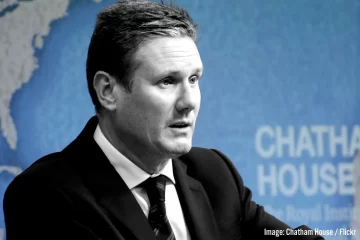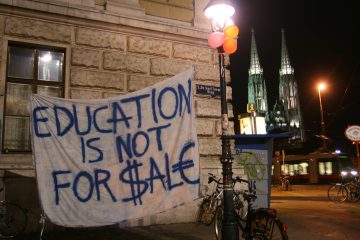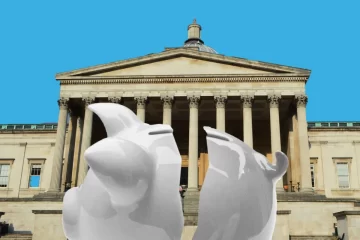In 1999 the Macpherson report established that there was ‘institutionalised racism’ within the police force. This was after the landmark case of Stephen Lawrence, a black teenager who was stabbed to death while waiting at a bus stop by a group of young white men.
Dobson and Norris (the murderers) were found guilty of murder, only 18 years after the event, after years of campaigning and investigations from Lawrence’s family – which eventually proved the police to be littered with corruption and utter contempt for black working-class families.
The report revealed that an undercover officer had infiltrated the anti-racist campaign surrounding the case to spy on and find ‘dirt’ on the Lawrence family.
The phrase ‘institutionalised racism’ went on to define the anti-racist struggle for some time afterward. It acted as a guiding focal point towards structures and specific posts that people felt needed to change to progress the fight against racism.
New initiatives were launched to encourage ethnic minorities to join the police force, with senior positions. Trainings around ‘unconscious bias’ were and still are given, and many felt we were beginning to turn the tide in combating racism.
However, 20 years later what change has happened? We must ask, how can you abolish institutionalised racism, if that institution maintains the same class character and purpose? The 2011 riots sparked by the police killing of Mark Duggan demonstrate that most change, if any, has been largely superficial.
Recent reports show there has been a rise in deaths of ethnic minorities following contact with police. One case, involving a woman, involved the use of leg shackles.
In rural areas of Britain, black people are 17.5 times more likely to be stopped by police and three times more likely in the supposed mosaic of ethnic diversity that is London. Black people are also 3 times more likely to have tasers used against them. This is all despite the Macpherson report and years of promises from senior police officials that action was being taken.
Twenty-three people died during or after police custody in 2017. In the 17 cases where force was used, the IOPC said nine people were white and eight were black. That means the proportion of black people dying after the use of force or restraint continues to be higher than the proportion of black people in the population of England and Wales.
The number of deaths after the use of force or restraint rose last year, as did the number of people from an ethnic minority background who died after a clash with police. In 2015-2016, 3 out of 11 deaths after police restraint/use of force were from ethnic minorities. The figure for 2016-17 was five out of 15. Now, it is 8 out of 17. It is no coincidence that as the economic crisis deepens, and austerity sharpens we are seeing a rise in conflict between the police and the working class generally, and minorities specifically.
In 2017, a number of black men died after contact with police, with various unexplained injuries. None of the officers involved faced consequences in any of these cases. These statistics are hard to collate, so the scale of the problem is hard to represent accurately. The evidence we do have is undeniable – the police force remains institutionally racist against the black working class. The deaths, and disproportionate use of violence (which goes on to replicate itself in sentencing given) show this. The Met currently wants to change this through reaching out to ethnic minorities to join the police force.
However, the idea that you can make the police force less racist by adding black police officers is incorrect. It misunderstands the role the police force plays in society, which is ultimately to defend the private property of the rich.
Part of their role demands the subjugation and division of the working class along as many lines as possible. The idea that black people are inherently dangerous, prone to drug use and/or violent behaviour provides the perfect frame work for police to then conduct their work.
This myth of black criminality can be traced back to slavery. Its orchestration has been one that remains deeply entrenched in the psyche of capitalism’s most loyal defenders today. A black man on the street equals danger.
If you then give the police power to stop and search, and/or use excessive force without reason they can ensure that poor black communities remain alienated from the rest of the working class, thus deepening the myth and caricature they perpetuate.
The reality of poverty and crime is of course more intricate. As the capitalist crisis deepens, so does the desperation from society’s most vulnerable. The anger and pent up frustration may express itself through crime, riots, or more dangerously for the ruling class – organised protest.
In order to dilute the class struggle, the ruling class may heighten its attacks on sections of the working class to divide them amongst themselves. During the 2011 riots, David Cameron condemned what he saw as ‘sickening scenes’ and ‘pure criminality’, to divert attention away from the riots as an expression of the anger of the most downtrodden layers in society.
Institutional racism seats black people at the bottom of society. The poorest black households are expected to experience a 20% drop in living standards by 2020. Welfare cuts and austerity will hit ethnic minorities the hardest. Black Caribbean pupils are three times more likely to be permanently excluded from school compared with white British pupils. 42% of the prison population was permanently excluded from school.
What do these statistics demonstrate?
They demonstrate an irrefutable connection between class, racism and social decay. To be working class and black is the additional knife in the back to keep you at the mercy of the capitalism, which condemns the majority to a life of insecurity and poverty amidst plenty.
For example, we have the resources to build safe and well-built homes for all people – which would remove the material basis for some xenophobia and hate crimes (just last week, a man’s door was graffitied with ‘no blacks’ in Salford). But those resources are in the hands of a small group of people with no interest in solving these problems, because they can’t make a profit out of it.
The result is overcrowded, inadequate housing, with little to no investment that fosters racism between residents. Coupled with cuts to education, and local councils, we see ‘gang culture’ and ‘post code wars’ develop – where protection of your block acts as the only way for young black men to exert any agency over their lives.
Fewer than a third of black households own their home. While home ownership across all ethnicities has fallen since the financial crisis, black families have seen the biggest drop: in 2001 the proportion who were owner-occupiers stood at 39%; by 2016 it had fallen to 29%.
The borough with the largest number of black residents in London is Lambeth in the south. In that borough, which includes areas such as Brixton and Crystal Palace, the average house price has increased by 76% over the past 10 years, to £529,546. In Croydon, which has the largest African-Caribbean population in the UK, house prices have also been shooting up, with the average cost of a home rising by 62% over the past decade to £374,276. If you combine this with the fact that black and other ethnic minorities are more likely to be in precarious work, the future for black people under capitalism remains meek.
As long as capitalism remains, there will continue to be a shortage of housing, that pits sections of the working class against each other. The ruling class will continue to promote this, so black people see white workers as their enemy – rather than this system of exploitation.
The question of housing is fundamentally a question of class. The desire to ‘make it out’ of poor neighbourhoods is often promoted through music, movies and other forms. Black individuals who raise themselves above their peers are accepted and even praised as proof that hard work pays off.
The idea that black people simply need to work harder to better their position in society is insulting and a lie. Firstly, there is a clear historical link between slavery, and racist laws that have marginalised black people from taking part in society for over a century. Most of these formal barriers, were only removed in 1965 with the Race Relations Act (after the Civil rights Act 1964 in America). So, we must recognise the reality for black people in the UK – which has been a history of subjugation.
In the last 20 years, we have seen the emergence of a black middle class in the UK. Those black individuals can of course be victims of racism. Attacks, both verbal and occasionally physical, as well as isolated incidents of discriminatory behaviour, can and do take place against middle class black individuals. However, this is racism as suffered by individuals and does not equate to nor explain why, for example, the income poverty rate for black Africans in the UK is at 45%. That poverty rate does not exist because of the racism of individuals. It exists because the oppression of black people has been part of the capitalist system since its inception.
The institutionalised racism that has denied housing, employment and, most recently with the Windrush scandal, even citizenship, is what must be uprooted to combat its final expression on an individual basis. These can take different forms, i.e a white co-worker assuming a black person is a cleaner, to someone shouting a slur at a black person or, at its most extreme the murder of someone like Stephen Lawrence. The point is that all these acts flow, in the final analysis, directly from the capitalist system, which then expresses itself to greater or lesser degrees. Ultimately however, it is the black working class whose lives quite literally are the ones in most danger.
Kwasi Kwatereng is a black Conservative MP, (who claims Churchill as his political hero). He studied at Eton, read Classics at Cambridge and now sits behind Theresa May in government. He will not be stopped and searched, humiliated and degraded because he ‘looks like a criminal’. He will not be deported with the Windrush generation. His class position means he is absolved from the condemnation his skin would serve him otherwise. This is the same for other black individuals who aren’t working class. Chukka Umunna even wrote a blog post precisely about avoiding working class ‘trashy’ areas of London. The poison of racism flows directly from class. If we want to understand racism we cannot separate it from class.
Racism is not simply the product of bad individuals. Nor is it the product of angry, white, working class communities. It is the product of class society, which perpetuated ideas to justify slave exploitation, and the division of the working class. By understanding that racism is the product of the class system – it becomes clear that ‘unconscious bias’ training is not the solution to a racist police force tyrannizing young black men. We have a racist police force because of our class-based society, and the ruling class that uses that body to defend itself. It is class society that must be destroyed if we are to remove the scourge of racism from our lives. Stephen Lawrence was a victim of racism, and ultimately capitalism. His murder, and the disgusting subsequent treatment by the police is indeed an illustration of institutionalised racism – but also the words of Malcom X – ‘you can’t have capitalism without racism’.
Fiona Lali




0 Comments